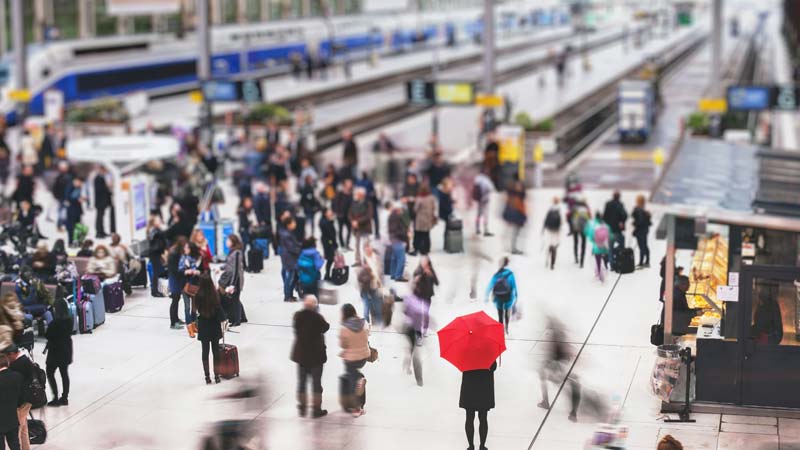For the cities of the future to thrive, we must invest and innovate

We’re in the middle of a new migration. Sixty years ago, the number of people living in rural areas was more than double those living in urban areas. Today we stand at just over 4 billion people living in cities with that number projected to reach 7 billion by 2050, by which point the urban population will outnumber the rural by two to one.[i]
The nature of cities is also changing, as megacities (those with populations over 10 million) grow in number. While there are 33 such cities today, that number is projected to increase by more than half to 50 in 2050.[ii]
Around the world, the impact of this growth is already being felt acutely through its impact on transportation infrastructure. In Visa’s ‘Future of Transportation’ study, more than 46% of people surveyed reported an increase in their commuting times over the past five years, with 37% expecting this trend to continue over the next five.[iii]
If sprawling megacities are going to maintain a decent quality of life for their citizens, then it’s crucial that they invest in their transportation systems with the whole urban ecosystem (residents, businesses and tourists) in mind. While extensive and costly infrastructure projects are often the focus of transportation improvements, other actions requiring relatively little investment, can be taken which can have an positive impact.
Today, a variety of technologies have, or have the potential to, reduce friction at every point of a journey through a city, helping to support a dynamic, accessible transportation system for both residents and visitors. Investing in these technologies is substantially less expensive than adding a new Metro or tram line but can make a significant impact on daily travel.
The solutions of today and tomorrow
Contactless technology has revolutionised the way people throughout Europe pay for their everyday items. In fact, 70% of all face-to-face transactions in the region[iv] are contactless, either by card or via a mobile device. And now, contactless is changing the way people travel through cities such as London, Edinburgh and Manchester where residents and visitors have been moving away from using tickets and fare cards and instead are tapping to pay with their credit and debit cards.
Not only does the introduction of contactless payment technology eliminate the cost of staffing busy ticket offices or maintaining kiosks, it also speeds up bus boarding and movement through barriers. It’s an elegant solution, which can be rolled out across existing public transport networks at relatively little cost and with minimal disruption when compared to major infrastructure projects. This ease of application means contactless payment technology is now available on all major bus fleets in regional hubs throughout the UK[v].
Mapping and journey planning apps are making getting around easier than ever, helping residents and visitors alike navigate confusing transportation systems. Apps such as the TfL app are improving the customer experience by providing fare transparency for contactless users, making it easier for people to view their journey history and keep track of their spending.
Everyone benefits when cities facilitate integrating private, public and shared transportation. Local businesses see increased trade as the trip around town becomes more convenient and consumers have an easier journey when meeting friends, going to gigs, and doing other activities. As we head into a new decade, local authorities that engage technology companies offering mobility solutions will create a more connected experience and a city that is more enjoyable and liveable for everyone.
As an example, if a traveller is only looking at the metro map, they may think that several changes are required to get to their destination. However, a journey planning app can streamline that journey with a faster and easier combination of walking, bus and bike share.
Bikes and scooters have joined ride-hailing apps to help fill the gap when public transport is unavailable, reducing the potential of congestion caused by private transportation. These solutions require minimal public investment beyond collaboration with enterprises to harness existing infrastructure.
Making this vision a reality
At Visa, we understand that as our cities become increasingly crowded, ensuring that they remain enjoyable and healthy places to live, work and visit is one of the biggest challenges of our time. We know that, however people choose to get around, payments are central to creating a better infrastructure that works for everyone. That is why we are committed to helping public and private transport companies give their customers a faster, more convenient way to adopt and pay for alternative, green transportation.
Visa will be discussing the role of ticketing and urban transport policies in delivering MaaS at Transport Ticketing Global 2020 in London in January. For more information see here: https://www.transport-ticketing.com/
If you’d like to learn more about how Visa is helping improve local transport, click here. Or if you’re interested in finding out more about how investing in your transport network can improve your local community, please contact us to set up a meeting at Transport Ticketing Global on 28th-29th January.
[ii] UN Population Report 2018
[iii] Visa, Future of Transportation report, 2019:
[iv] Visa processing data – all face to face transactions processed domestically in Europe as at 31 December 2019.